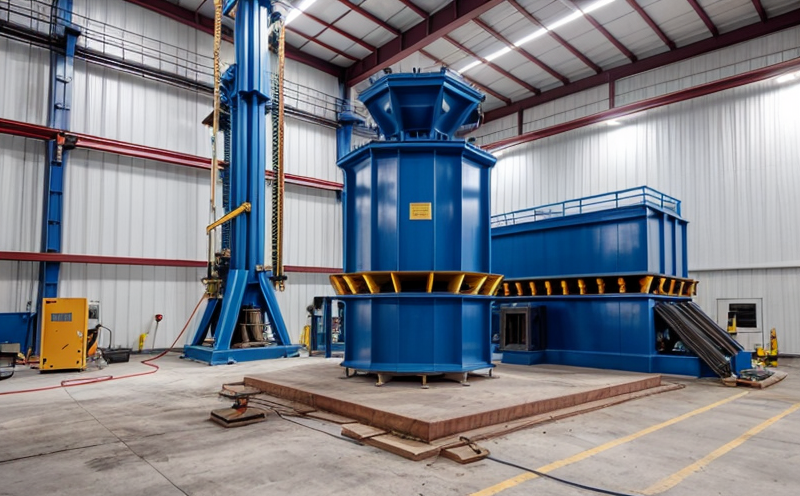ISO 7626-1 Vibration Mode Shape Measurement
The ISO 7626 series of standards provides a framework for the testing and measurement of structural vibration, modal analysis, and mode shapes. The ISO 7626-1 standard specifically addresses the measurement of vibration mode shapes in structures subjected to harmonic excitation. This service is pivotal for ensuring that products perform reliably under dynamic loading conditions without excessive deformation or failure.
Vibration mode shape measurement involves determining the spatial distribution and natural frequencies of a structure's modes of oscillation. These modes are critical for understanding how a structure will behave under various types of stress, including those encountered in real-world applications such as machinery operation, transportation systems, and building structures during earthquakes or high winds.
The process begins with thorough specimen preparation to ensure that the structural integrity is not compromised by any external factors. Once prepared, the specimen undergoes harmonic excitation using a controlled force source. The resulting vibrations are then captured using highly sensitive accelerometers placed strategically around the structure. Advanced signal processing techniques are employed to extract the mode shapes and associated natural frequencies.
The accuracy and reliability of this test depend heavily on precise calibration of equipment and adherence to standardized procedures outlined in ISO 7626-1. This ensures that the results are comparable across different laboratories, which is essential for regulatory compliance and quality assurance.
Understanding the vibration mode shapes helps engineers design more robust structures capable of withstanding environmental stresses without sustaining damage or failure. For instance, in automotive manufacturing, this information can guide improvements to chassis designs, enhancing overall vehicle performance while ensuring safety standards are met.
Another example is its application in the aerospace industry where components must endure extreme conditions during flight operations. By accurately measuring vibration mode shapes before assembly and after modifications, manufacturers can identify potential issues early on, preventing costly rework or recalls later in the product lifecycle.
In conclusion, ISO 7626-1 Vibration Mode Shape Measurement is an indispensable tool for ensuring structural integrity and performance across diverse industries. Its ability to provide detailed insights into how structures respond to dynamic forces makes it a cornerstone of modern engineering practice.
Applied Standards
| Standard Number | Description |
|---|---|
| ISO 7626-1 | Vibration – Modal analysis of structures – Part 1: General concepts and terminology for vibration mode shape measurement. |
The ISO 7626 series is widely recognized as a comprehensive set of guidelines for conducting modal analysis on complex mechanical systems. It covers everything from basic definitions to advanced techniques used in various industries. In particular, ISO 7626-1 focuses explicitly on the measurement of vibration mode shapes, providing detailed instructions on setting up tests and interpreting results.
The standard emphasizes the importance of proper setup procedures to avoid errors that could lead to incorrect conclusions about structural behavior. It also stresses the need for accurate calibration of all instruments involved in the testing process. Compliance with these standards is crucial not only for achieving reliable test outcomes but also for ensuring consistency between different laboratories performing similar tests.
Adherence to ISO 7626-1 ensures that the data generated from vibration mode shape measurements can be relied upon both internally within organizations and externally when sharing results with regulatory bodies or clients. This standardization promotes trust in the industry by establishing clear expectations regarding testing methods and expected outcomes.
Why Choose This Test
- Precise Data Collection: The ISO 7626-1 Vibration Mode Shape Measurement offers precise data collection capabilities, enabling accurate determination of structural properties that influence performance and durability.
- Regulatory Compliance: Adherence to internationally recognized standards ensures compliance with regulatory requirements, which is essential for obtaining certifications and approvals from governing bodies.
- Improved Product Quality: By identifying potential weaknesses early in the development process, this test helps manufacturers enhance product quality by making necessary adjustments before mass production begins.
For industries like automotive, aerospace, and construction, where safety and performance are paramount considerations, choosing ISO 7626-1 Vibration Mode Shape Measurement ensures that products meet strict quality standards. The detailed insights provided by this test allow engineers to optimize designs for better efficiency and reliability.
Competitive Advantage and Market Impact
- Innovation Leadership: Companies utilizing ISO 7626-1 Vibration Mode Shape Measurement stay ahead of competitors by continuously improving their products based on the latest technological advancements in modal analysis.
- Better Customer Satisfaction: By ensuring higher levels of product reliability through rigorous testing, businesses can offer more trustworthy solutions to customers, leading to increased customer satisfaction and loyalty.
- Economic Benefits: Early identification of design flaws reduces costs associated with rework or recall actions. Additionally, improved performance translates into lower maintenance expenses over the life cycle of a product.
In today's competitive market, maintaining high-quality standards is key to survival and growth. Implementing ISO 7626-1 Vibration Mode Shape Measurement not only enhances competitiveness but also contributes positively towards sustainable development goals by promoting resource efficiency and reduced environmental impact.





